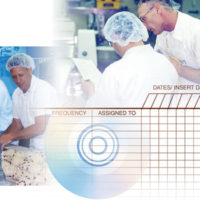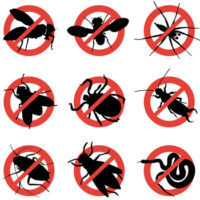Give Food Plant Sanitarians Their Props

The sanitation department is the most important department in a food manufacturing facility. There, I’ve said it!
Think of it. How can you start your plant in the morning without it being clean? How can you expect to have acceptable product shelf life without a sanitary environment? And, how are you going to be certain that your products are safe for consumption without an environment nearly free of pathogens? You can’t do it without the actions of a group of individuals willing to work in the dead of night, often in wet conditions and with little to no recognition. It’s time to give the sanitation workers their props. (For those of you not from the MW generation, props are “proper respect.”)
Let’s start by understanding the basics of food plant sanitation. Sanitation is essential to food safety and quality, and is the foundation for all food safety programs. The objective is to remove soil and microorganisms from the processing environment to prevent the manufacture of foods under insanitary conditions. If done correctly, the result is the destruction of microorganisms, including pathogenic, spoilage and indicator organisms. When this is accomplished, you are more likely to prevent foodborne illness, reduce product spoilage and increase product shelf life. Which one of these three don’t contribute to a healthy bottom- line? (You may say “thank you” to the sanitarians now.)
POSITIONING SANITARIANS’ SUCCESS
How do we make sure that we have put sanitation in a position to be the most important department in the plant? Start by hiring staff who are physically able to do the job, who can work the hours required and who can handle the environmental conditions in which they work, which involves the use of chemicals in wet areas. When interviewing prospective candidates, look for associates who will be conscientious, take pride in the job and are safety conscious.
Next, provide them with an environment and equipment that will be relatively easy to clean in the time allowed. In other words, make sanitation easy—or the sanitarians will. Give the sanitation crew the personal protective gear to do the job (rain gear, aprons, boots, gloves, goggles); the tools to effectively clean and sanitize; and the training and direction to do the job properly and safely. Teach them about lock-out/tag-out procedures—what they are and why they are important. Provide them opportunity to meet with the sanitation chemical representative and let them discuss technique, the best chemicals for the job and equipment needs. Let the sanitarians help make decisions on the best equipment for the job that they are doing (e.g., belt washers, clean-in-place [CIP] systems).
Provide sanitarians with clear, written procedures for each area and piece of equipment to be cleaned and expectations of cleanliness. We have found that it is very effective to incorporate photos to show proper technique. If your company has an intranet, digital photos and even video can be incorporated into the on-line procedures for greater effect.
PROVIDING SANITARIANS WITH INFO
There are basic procedures for effective cleaning and sanitizing of which sanitarians must be apprised. Cleaning should start with the pick-up of dry scraps, paper and packaging. This should occur throughout each shift to prevent excess buildup and insanitary processing conditions. You can also assist the sanitarians by having production personnel conduct the dry pick-up at the end of their shifts to save time and effort.
Follow this with a hot (120F-130F) water rinse to break up fat, remove visible soils and combine this with mechanical action to prepare surfaces for cleaning. Rinse from top to bottom, reduce pressure to prevent atomization, and be sure to avoid heavy spray on floors and into drains.
Water temperature is most effective between 120F and 155F. If the water is not hot enough, fat won’t melt; too hot and protein denatures will make removal from surfaces more difficult. Also, water hardness must be known when determining what cleaning and sanitizing compounds will be used. Again, use mechanical action as needed to remove soil and prevent buildup that can contribute to biofilm formation.
The frequency with which the plant is cleaned will depend greatly on the operation and the types of soils involved. Dry mix plants are often continuous with ongoing cleanup. Slaughter and further process plants now have flexibility from the Food Safety and Inspection Service (FSIS) to determine what is appropriate provided there is no insanitary condition or production of adulterated product. A rule of thumb is to clean once within a 24-hour period and after changeovers: such as between allergen ingredients (food safety), between species (economic) and between spices (quality). Consult your sanitarians and quality assurance (QA) department to determine the appropriate cleaning frequency.
Inspect surfaces to assure that they are free of visible food particulate and soils. Inspection is a critical element to sanitation because it is assurance that your procedures are effective and have been properly administered. It begins before sanitation is even completed by observing sanitarian practices and providing sanitarians with guidance on technique.
Once cleaning is complete, basic monitoring begins with organoleptic inspection. Look in, around and under equipment and structures for indications of soil removal. Smell the environment. Does it smell clean, or are there sour or musty odors? Feel equipment surfaces for grease/grit from incomplete soil removal.
Provide the proper tools to monitor, including a flashlight; a no-glass mirror for inspecting difficult-to-reach locations; test strips or kits to monitor the efficacy of cleaning and sanitizing solutions; a thermometer for checking water temperature; a ladder or lift to inspect tall equipment and overhead structures; and a notepad and pen to record findings. Inspection findings should be noted as they are observed, clearly describing the conditions, corrective actions and effectiveness of the corrective actions. These findings should be tracked to determine trends. It is far better for the plant to identify poor sanitation trends and take corrective/preventive action, than for regulatory inspectors to do so.
Inspection also should incorporate the use of ATP bioluminescence technology to verify cleaning effectiveness. This technology does not indicate the presence of microorganisms, but rather, it measures the presence of organic material, indicating an environment in which microbes can live and grow. It is most effective when used in combination with microbial monitoring, since it gives rapid response, providing immediate feedback to the sanitarian. Software with most ATP units will allow you to track and trend data by day of week or by equipment, again providing useful information to the sanitation department. It is highly recommended that sanitarians are trained to use this device for self-monitoring.
Use of generic microorganism monitoring can be effective in validation of sanitation. Monitoring for aerobic plate count, coliforms, and yeast and mold will give indications over time if the sanitation process is resulting in overall hygiene improvement. Environmental testing of floors, drains and indirect contact surfaces also provides valuable data indicating the control of Listeria species.
The final step in the process is to sanitize to destroy hidden microorganisms. If the sanitation effort is effective, sanitizing will give an extra measure of microbial control. The environment to be cleaned and the organisms of concern will again dictate selection of sanitizers. Quaternary ammonia (quat) is most effective against gram-positive bacteria (Listeria) and is stable in warm water. Chlorine is most effective against gram- negative bacteria (Salmonella), but is unstable in warmer water and can be hard on some metals if used exclusively. It is recommended that you alternate sanitizers during the week to prevent the buildup of any specific microflora. For example, use quat Monday and Tuesday, chlorine on Wednesday, and quat the balance of the week. Always finish the week with quat, since it has a somewhat residual effect. Never mix quat and chlorine together: They can produce a dangerous reaction. Iodine is effective against both gram-positive and gram-negative bacteria, can be used at lower levels (25 ppm) and has a residual effect. It can, however, stain belts and buckets when used frequently. Your chemical supplier can also recommend effective sanitizers for your specific sanitation needs and budget.
In general, apply sanitizer to food contact surfaces at 200 ppm and to floors at 800-1000 ppm. It is acceptable to apply sanitizer to food contact surfaces at higher concentrations, provided it is followed with a potable rinse. Fogging with sanitizer can be effective, but it also can be very hazardous. People must be thoroughly trained and wear protective gear, and areas must be secured to prevent access while fogging.
PROPER RESPECT IS MERITED
My hope is that you will use this information to ensure that you have provided your sanitation crew with all the resources that they need to continue to be the most important department in the plant. Provide the sanitation department with the right people, the right tools and the right training and you are well on your way to an effective program. But don’t forget the give them their props, too. They often miss out on the parties and the lunches and don’t see management or hear about the status of their company. Spend some quality time on the night shift, spring for pizza, review microbiological swab data with them, let them know how their company is performing, and remind sanitation associates how important they are to the company’s success and that you support their efforts. Remember, if they are successful, your business will be successful.
Michael M. Cramer is Vice President Food Safety and Quality Assurance with Specialty Brands, Inc., a manufacturer and distributor of high quality, value-added frozen foods for both foodservice and retail based in Ontario, CA. He has been involved in the food industry for more than 24 years with experience in poultry, processed meat, spice and coatings and frozen foods. He is a member of the Institute of Food Technologists and is actively involved with the National Meat Association and Food Safety Net Services.
Looking for a reprint of this article?
From high-res PDFs to custom plaques, order your copy today!






